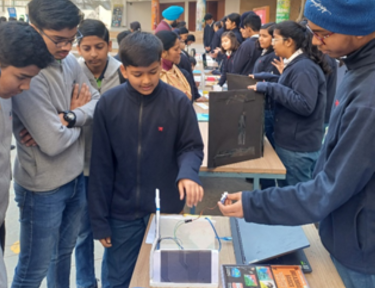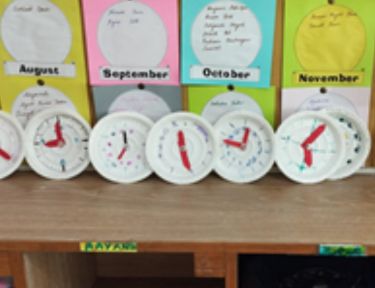


AUTOMATION SYSTEMS
About the project
The primary objective of the project was to equip students of class VII with the fundamentals of automation and its practical applications in real-world scenarios. Through the project, students delved into the basics of microcontroller technology, ultrasonic sensors, and basic programming techniques tailored for microcontrollers. The project fostered a comprehensive understanding of these technologies, enabling students to grasp the essential principles underlying automation.
Driving Question
How does automation take place?
Process
The project undertaken by the students involved the development of an Arduino-based automatic door mechanism using an ultrasonic sensor. Here’s a brief overview:
Research Phase: The students began by exploring various modes of automation in real-life scenarios, such as industrial, robotic, and home automation. This provided them with insights into the diverse applications of automation and the mechanisms involved.
Understanding Sensors: They studied different types of sensors commonly used in automation projects, with a focus on ultrasonic sensors. These sensors emit high-frequency sound waves and measure the time it takes for the waves to bounce back after hitting an object, allowing them to determine the distance between the sensor and the object.
Development Phase: Using their acquired knowledge, the students proceeded to develop the Arduino-based automatic door mechanism. They programmed the Arduino microcontroller (Atmel’s microcontroller) to continuously monitor the output of the ultrasonic sensor.
Functionality: When the sensor detects movement within a certain range, indicating someone approaching the door, the Arduino triggers the door to open automatically. After the individual passes through and is no longer detected by the sensor, the Arduino initiates the closing mechanism, closing the door automatically using a DC motor.
Learning Experience: Through this project, the students not only applied their theoretical knowledge of automation and sensor technology but also gained valuable hands-on experience in designing and implementing a practical automation solution for everyday use.

Project Culmination
The culmination of the project marked a significant milestone for the students as they presented their findings and showcased their electronic hardware prototype of an Arduino-based automatic door mechanism. With enthusiasm and confidence, they demonstrated their understanding of basic automation principles and their ability to apply them in a real-world context.
Teacher Reflection
The project succeeded in achieving its overarching goal of imparting fundamental concepts of automation while fostering hands-on learning experiences by developing electronic hardware. The project catalysed fostering creativity and innovation among the students.
















